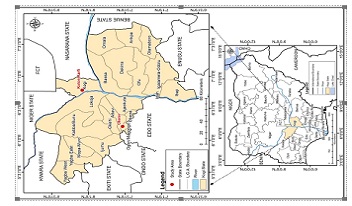Fingerprint Ridge Counts and Indices Among Selected Dialects of The Ebira Ethnic Group, Nigeria
Keywords:
Dermatoglyphics, Digit, Ebira, Fingerprint, Indices, Ridge countAbstract
Background: Fingerprints permanency, genetic influence as well as the number of easily observable and measurable characteristics have been one of the most suitable parameters for studying population variability. This study aimed to determine the variability of fingerprint ridge counts and indices among selected dialects of Ebira ethnic group in Nigeria.
Material and Methods: This study was carried out among adolescents of Ebira ethnic group age range 13 to 17 years. 591 subjects (294 males and 297 females) were recruited for this study from selected secondary schools. Fingerprints of the subjects were collected using standard ink procedure. The fingerprints were classified and the ridge count for each digit was determined and scored. The fingerprint indices were calculated using standard formulae. Data obtained were analyzed using SPSS version 20.0. The Independent t-test was used to test for sexual dimorphism and one-way ANOVA for the differences between digit ridge counts and dialects.
Results: Fingerprint ridge count showed significant (P<0.05) sexual dimorphism for Ebira-Koto and Ebira-Etuno dialects. A significant difference was seen in the fingerprint ridge count for males in the three studied dialects. The same result was also observed in females of the three dialects. Different fingerprint indices revealed varying values for the studied dialects.
Conclusion: Fingerprint ridge counts may serve as a means of identifying males and females of various Ebira dialects. The fingerprint indices showed inter dialect variations with related values in Ebira-Tao and Ebira-Etuno.

Downloads
Published
Issue
Section
Categories
License
Copyright (c) 2021 AO Yusuf, B Danborno, JA Timbuak, MO Suleiman

This work is licensed under a Creative Commons Attribution-ShareAlike 4.0 International License.




